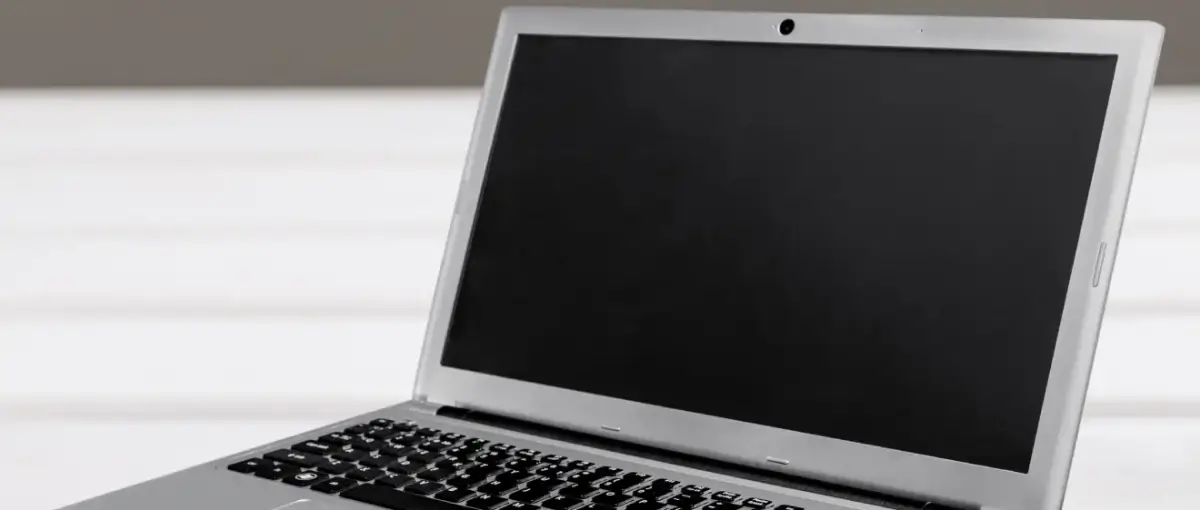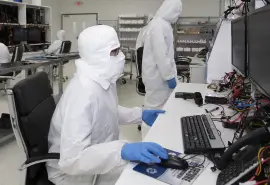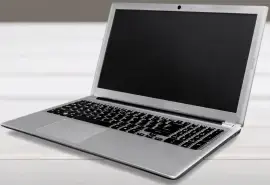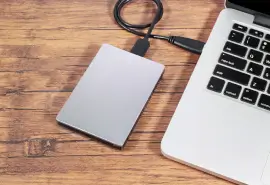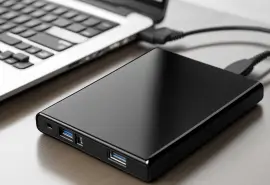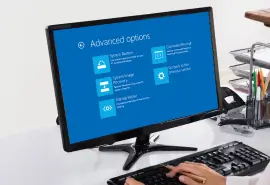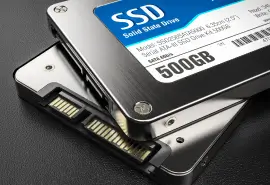It’s easy to panic if your HP laptop won’t turn on, especially if it is your primary computer and contains essential files. Whether it is a hardware problem or a Microsoft Windows issue, being unable to start your laptop can have significant consequences. The experts at Secure Data Recovery, the authority in RAID, SSD, and hard drive recovery, offer several tips for diagnosing and troubleshooting problems with an inaccessible HP laptop.
Problem: Power Supply
Start by pressing the power button. How the laptop responds to this action will inform the next steps.
If the HP laptop won’t turn on, test the power supply. The power supply often refers to the system that delivers electrical current to the laptop, including the battery and charger.
First, check the laptop’s battery. Connect the adapter to a working power source to determine if the problem is a drained battery. Press the power button and see if the HP laptop starts.
If the laptop still doesn’t boot, it could be an issue with the charger, which consists of an AC adapter and power cable.
The adapter converts the alternating current (AC) from a wall socket into a direct current (DC) that powers the laptop. Depending on the age and model of the HP laptop, it will have either a traditional power brick or a USB-C charger. (Note: While USB-C chargers are universal, use the power cables shipped with the laptop if possible.) Connecting the incorrect charger to the HP laptop can cause it to malfunction. Each charger provides a specific voltage that is unique to a particular laptop. Using the wrong adapter means the battery cannot charge. It could even damage the laptop.
Next, find the HP logo on the charger. Plug in the prongs to a wall socket and see if an indicator appears. If not, there could be an issue in the power supply assembly. Inspect the power cord and connectors for visible defects. Test the cord with another device if it looks fine but does not power the unresponsive HP laptop. If the second computer does not boot with the original power cables, then replacing those could fix the problem.
Otherwise, it’s time to consider an alternative reason why the laptop won’t boot.
Problem: BIOS Settings
Users could also look at the laptop’s screen to learn about the problem.
Press the power button. Users have several troubleshooting options if a power light appears but the laptop displays a black screen and Windows does not load.
Before moving on to other fixes, checking if a setting is causing screen issues is good practice. That means accessing the HP laptop’s Basic Input/Output System (BIOS).
(Note: Navigating through the BIOS can be unforgiving, and improper changes can worsen the situation. Exercise caution while proceeding.)
To enter the BIOS, repeatedly press the designated key on startup. Common keys for HP laptops include F2, F10, F12, DEL, or ESC. However, the specific key depends on the model. Consult the product documentation or visit HP’s website for more details.
If the BIOS screen appears, it’s likely a fixable software configuration issue.
Begin by locating the Boot or Boot Order sections. These settings instruct the computer to boot from a specific drive. However, the laptop will not display anything if that drive does not contain a bootable operating system. Select the system drive from the list and move it to the top of the boot order.
In addition, a mismatch of BIOS settings between the laptop and the operating system could lead to accessibility issues. For example, those who used Legacy Boot Mode before upgrading to a newer operating system might need to switch to a more modern mode in their laptop’s boot menu, like Unified Extensible Firmware Interface (UEFI).
Incorrect graphics in the BIOS can also cause errors. Check the graphics settings and ensure the dedicated or integrated adapter is set, depending on the laptop’s configuration.
Usually, reconciling these BIOS settings addresses the problem.
However, if this systematic approach does not work, there is a chance the HP laptop screen is damaged or defective.
In most cases, hardware replacement is better left to professionals. Repairing laptop hardware can be challenging. It could even require reinstalling the CMOS battery, which stores BIOS settings in the computer’s motherboard. Contact HP Support to inquire about specialized repairs and learn whether the laptop is still under warranty.
Problem: Software Conflicts
Sometimes, the laptop’s display works but remains stuck at the Windows loading screen. In that case, users can attempt to eliminate software conflicts within the operating system.
Start by disconnecting all external hardware from the laptop. Problematic drivers can prevent the computer from starting. Unplug external hard drives, USB drives, and other external devices from the laptop and reboot. If Windows loads, then uninstall or update those drivers.
If Windows does not load, users can enter Safe Mode.
Windows 10 or 11 users can press and hold the laptop’s power button at the loading screen to force shut down. Repeat the process until Windows initiates Automatic Repair. A blue screen will appear when Windows launches Automatic Repair. From this screen:
- Choose Advanced options.
- Click Troubleshoot.
- Select Startup Settings.
- Choose Restart.
Another menu will appear after the laptop restarts. Press the designated key to enter Safe Mode.
Safe Mode loads Windows without all the extraneous software installed on the laptop. If Windows boots inside Safe Mode, users can try to diagnose and resolve the issue stopping the operating system from loading during its startup procedure.
New hardware drivers are the likeliest culprit, so starting with those makes the most sense. Still, users have several options to resolve the issue:
- Update the driver in Device Manager.
- Roll back the driver to a previous version.
- Uninstall the driver.
Users often will have to update, roll back, or uninstall drivers one at a time and see if that works.
Short of that, a hard reset or system restore is the last resort. However, users should understand that a system restore could involve data loss if they did not include those files in a recent backup.
Problem: Hard Disk Drive (HDD) or Solid-State Drive (SSD)
On occasion, HP laptops won’t turn on because the storage device failed.
Some users can shut down the computer and remove the HDD or SSD from its bay or slot. However, it is crucial to note that this option is not available on all models, and doing so can void the warranty. Check the laptop’s warranty status before proceeding. HP might cover the cost of repair or replacement.
Those who remove the storage device from the laptop can test the drive on another system. Insert the hard drive or SSD inside an external enclosure and see if the working computer detects the device. If recognized, users can back up their valuable files to avoid data loss or run diagnostic tools to analyze the condition of the drive.
Professional SSD and Hard Drive Recovery
In most cases, users can fix hardware issues, BIOS settings, or software configuration, and the HP laptop will turn on again. However, your critical data could be inaccessible if your laptop suffers SSD or hard drive failure and you do not have a backup.
Fortunately, that does not mean your data is lost forever.
Secure Data Recovery specializes in complex laptop data recovery from HP models that won’t boot, including the HP Pavilion, ENVY, Spectre, Stream, Chromebook, and OMEN.
Our engineers have experience with all SSD and hard drive failure scenarios and the expertise to resolve them. Since 2007, we have developed advanced tools and techniques to recover data from any storage device, regardless of manufacturer or file type. In that time, we have maintained a 96% success rate and resolved over 100,000 cases.
Trust the team with a state-of-the-art Class 10 ISO 4 cleanroom and the most industry-specific certifications to recover your lost files. As part of our flexible service options, we offer a free diagnostic and quote and a “No Data, No Recovery Fee” guarantee. You get your data back, or pay nothing.
Call us at 800-388-1266 or visit one of our nationwide locations to start a case and regain lost data.

